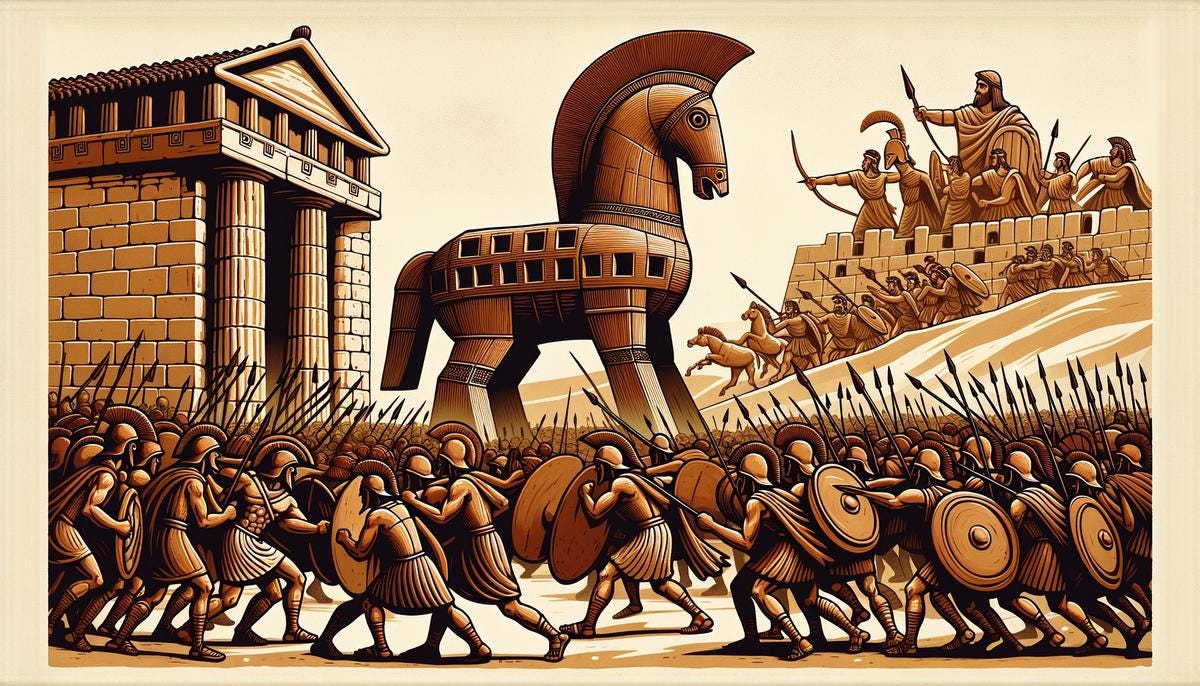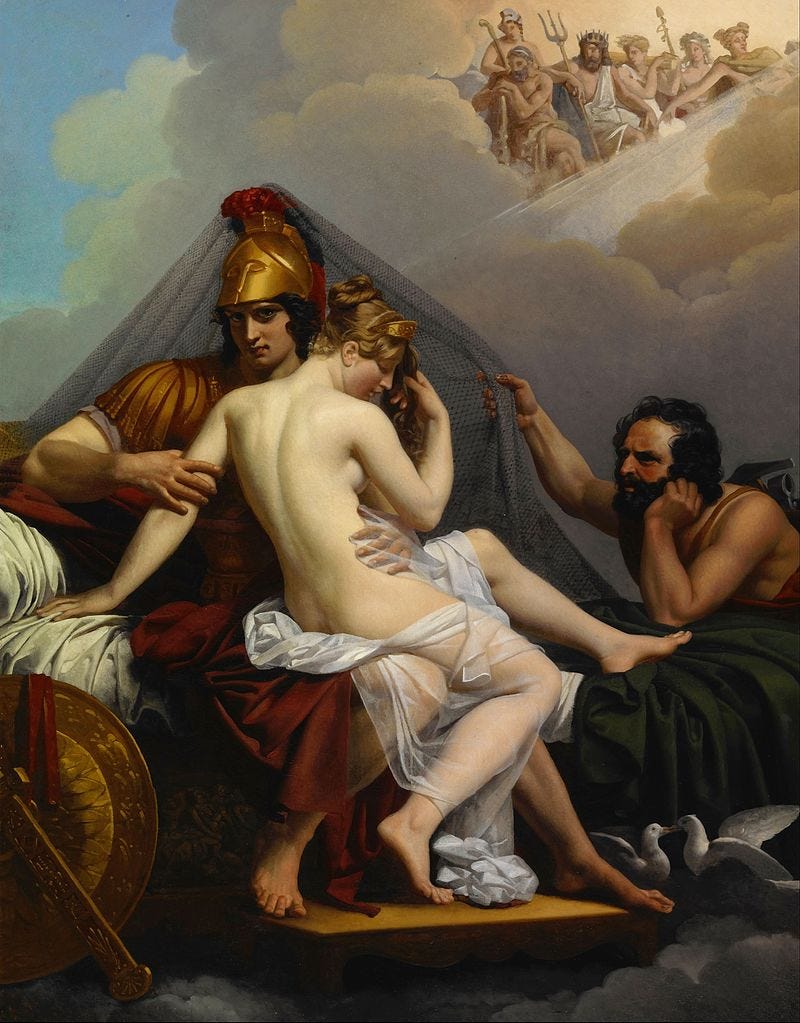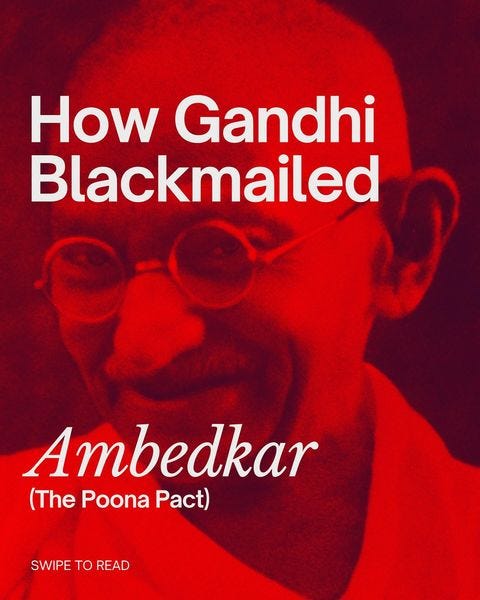Part 2: The Divine Masculine in Social Movements
In he 64 Tantric Arts & Sciences you’ll find music, dance, gardening, perfumery, poetry, and yoga. But you might also be surprised to find the study of critical thought, mathematics, sciences and perhaps most surprisingly, 33. the Study of the Arts of War.
While this is a non-exhaustive list meant to symbolize the wide range of practices a Tantric practitioner might pursue in their spiritual path, I draw this contrast because a true Tantric has mastered understanding of the material and the mystical.
Recently I’ve been fascinated by the symbolic role of war in spiritual traditions and social movements, and what that means about how we live our lives.

A gentle soothing story we like to tell ourselves is that humans have evolved and become better together over time. Growth is linear, infinite, inevitable. We believe that in the last century that we’ve become more enlightened, more educated, more technologically advanced. Democracy established, civil and human rights achieved, and through globalization, many millions lifted out of poverty.
I call BS on this story (and so does Vandana Shiva).1 We might have fancier machines, the internet, and financial mobility for the select few - I am a product of my ancestors’ wildest dreams, we say.
But the empirical truth is the world has only progressed in terms of equality, justice, harmony, and fairness in the last few centuries through resistence, revolt, and collective social movement.
Any progress humanity has achieved has been through the disciplined, strategic, and courageous risk-taking from everyday normal people.
And while the history books remember the names of individual heroes, progress has not been delivered to us by charismatic and benevolent leaders.2
This seems especially relevant for this particular moment of time, as those of us in the US remain transfixed on who will symbolically capture the soul of the nation in this coming week. This US election season has been an all-out war of symbology, narrative, and ideology.
🇺🇸🗳️ Being strategic - learn more about Swap Your Vote. If you’re in the Bay Area, check out these voter guides: KQED for issue breakdowns and Bay Area Rising Action for progressive endorsements.
Voting is a small but significant action in a much larger and longer fight we’re a part of.
Trumpism, disinformation, political apathy, despair all will still exist on November 5th. Remember that no matter who wins next week, we still are in quite a mess. And it will require our wit, cunning, strength, and leadership in mass movement to get through it.
Today I’m offering you 2-posts-in-1 to inspire and sustain your fight:
The Battle-Tested Strategy of Social Movements
In this post, I share some of the science/battle strategy of social movements from Social Movements and Organizing.
Re-imagining the Social Justice Warrior
Previewing Part 3 in the 4-part series
Keep Learning
A collection of readings, podcasts, + more on the history and science of social movements.
Beyond the vote, every moment in our lives we can be taking aligned action - and I believe we need all the Tantric Arts and Sciences, our ancestral wisdom, and our spiritual power channeled in service of a higher purpose, a greater mission. Stay tuned for Part 3 in this series.
The Battle-Tested Strategy of Social Movements
History, science, and research have a lot to teach us about successful social movements and what it requires of all of us. It turns out the most successful efforts that yield tangible results and improvements are through organizing. There is a methodology and approach to organizing that yields successful social progress.
While I was in Business School, I was able to sneak off to other schools at UC Berkeley to take classes I was more interested in and even applied these classes towards my MBA. One of these noteworthy classes was Social Movements & Organizing with Sayu Jayamaran. I compiled my notes from class with some of my annotations:
The Battle-Tested Strategy of Social Movements
In graduate school, I got to take Social Movements & Organizing with Saru Jaymaran. She taught that any social progress humanity has achieved has come from the masses collectively organizing, disturbing a specific target in a position of power to effect lasting change and ultimately shift the balance of power.
A common misconception about non-violent organizing is that *only* peaceful protests have resulted in change. In fact, this is one thing that surprised me the most in this class - a common strategy for some of the most notable non-violent organizers was actually to provoke violence. The point was to make a spectacle of the daily violence, terrorism, that was being endured and show the true nature of the oppressor.
Social change happens in the political arena and the literal battlefield. If you don’t ever imagine yourself having to lift a weapon against someone else, consider that a great privilege.
Social change will require sacrifice from all of us. Consider the symbology of the warrior as a place to take inspiration for how you lead, work, and live.
Reimagining the Social Justice Warrior
Do you ever wonder why love and war are often associated with each other?
Are love and war two sides of the same coin? Love and war are intense, contradictory forces but they weave similar emotions like passion, conflict, survival, and sacrifice. Both love and war are forces of creation and destruction. In love, we so often end up in conflict. In war, we see humanity make staggering sacrifices in the name of faith, love, and resistance.
I’m a lover, not a fighter! we say. But we know that under violent systems of oppression, a fight will be required of us. Remember that fear of conflict is a characteristic of white supremacy culture.
We’re living in very violent times. Some people say it’s always been like this and we just have front row seats to the horrors now from our phones. And it’s not just state violence - horrifying stories of domestic and gender-based violence have persistently found their way to global headlines, obscuring the many more stories that got lost to the dark. Masculinity is in crisis and this is impacting all of us.
This is why recently I’ve been taking inspiration from spiritual warriors - larger-than-life legends, myths, and archetypes. It’s helped me heal my relationship to the Divine Masculine. I know I’ve thrown shade at the Hero in the past, but there’s something warm and familiar with his mythology too. Maybe we’re meant to be reclaiming the Wild Woman *and* the Warrior.
Wherever you are on the spectrum of lover and fighter, sage and warrior, spiritual and material, the archetype of the spiritual warrior has something to teach you.
Continuing Learning 🌿
Kazu Haga is a nonviolence teacher, conflict reconciliator, restorative justice practitioner. This is him on a podcast on Buddhism and wellbeing:
“Most people get it. They just might not have an ideological framework within which to situate their frustration, their anger, their sadness, their hopelessness. So, in light of this, sometimes it’s helpful for us to frame issues of anti-capitalism and socialism in ways that are easily relatable and accessible.”
Upstream
Some of my favorite episodes from Upstream that break down accessible political education on class consciousness.
From niki franco, radical writer and community organizer. Two episodes on organizing and protest:
Even the non-violent movements have harbored internal violence. The 20th century “father” of non-violent revolution, Mahatma Gandhi, has an incredibly problematic history of domestic violence and casteism. We have to critically examining history and not lionize single leaders, so we can build on their legacies while doing better.
A really enjoyable read on the archtypal energies of Ares and Aphrodite:
“We’re often told that it would be unfeasible for everyone on the planet to live good lives - that if it wasn’t for some degree of poverty - or at least lower living standards - in the rest of the world, then we’d blow right through the ecological limits of the planet… It is possible, in fact.” From Upstream, a discussion on the research and empirical data that makes this case with economic anthropologist Jason Hickel:














